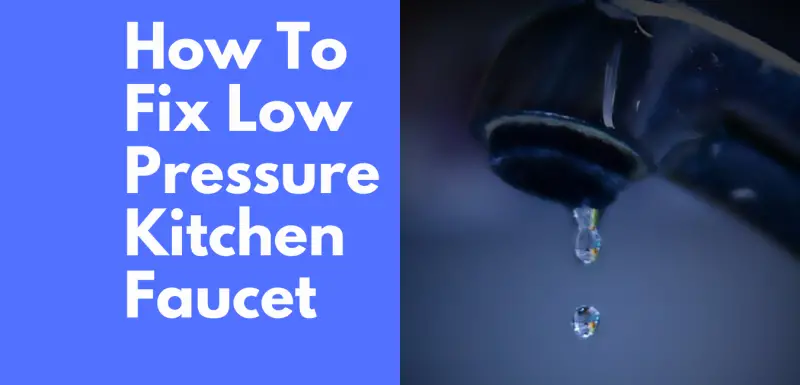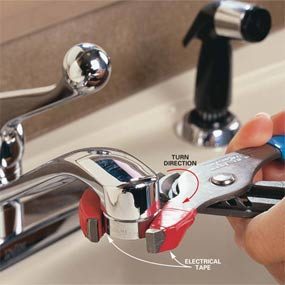Low water pressure in the kitchen faucet can be one of the most annoying and frustrating things you will ever encounter in the kitchen. When the pressure drops, it affects everything from menial hand washing to heavy dishwashing.
Keeping your kitchen faucet functioning well is at the center of kitchen maintenance and good home-making. So how to fix a low-pressure kitchen faucet?
The answer, like in any other problem, depends on identifying and locating the issue. There are a variety of sources from which your faucet can experience low water pressure. The first step is to locate where the problem is and then follow it up with the appropriate action.
You can repair almost any low-pressure problem in your kitchen faucet on your own. But it would help if you had the right guidance and instruction on how to do it.
Here are some of the most typical reasons why there is low water pressure in your faucet and how to fix them.
Table of Contents
Is the pressure problem only in my kitchen?
The First Thing
You need to find out if the problem is contained in your kitchen or extended beyond. One way to do this is simply to check the faucets and outlets in the other rooms/bathrooms. If you find that the pressure is low here too, then the problem is beyond your home.
Next, it is advisable to see if other homes in the neighborhood are facing similar problems. If the low water pressure is present in other nearby households, it may be from the supply lines or your municipality.
If there’s maintenance work going on in the supply pipes, there’s little you can do immediately. But it saves you the unnecessary trouble of trying to fix the problem yourself. If the problem is limited to your home and kitchen, there are some DIY methods you can do to fix the problem.
Check Out The Aerator First
Photo credit: Handyman
A lot of times, the main culprit behind lower volume and pressure in your faucet is the aerator. It is the tiny cap that matches your faucet’s mouth. It is intended to control water output by maintaining good flow while saving the volume of water.
However, because of the mesh or dotted surface, the aerator can hold on to small sediments and particles. These tiny deposits that come through your pipes get caught on the aerator.
Over time, these particles can accumulate and form chunks that can decrease the water pressure coming through. It is one of the most common and typical reasons behind low water volume/pressure. And that’s why you should check it out as a first measure.
Here Is How To Fix The Aerator In Your Kitchen Faucet
Clean the cartridge under the faucet
Your faucet is an assembly of parts, and the cartridge is one of the critical pieces that control water passage. You will find the cartridge located deeper into the faucet (around the base area).
First
Possible blockage in your pipeline
Occasionally, you may find that the low pressure is because of some blockage in the pipe leading up to your faucet. This can be a potential problem to check out if neither the aerator nor the cartridge seems to be the issue. To inspect your line:
Check If It Is Just The Hot Water Pressure
If the low pressure of the water is only present when you’re using the hot water, the problem may be with the water heater or its components. Check if the hot water valve is defective or perhaps partially turned off.
Hopefully, you will find that the valve is turned a little towards the ‘closed’ direction. Even if the valve is slightly off to one side, it can affect the pressure and volume of the water coming through. So, it is a component that is definitely worth checking out if the other measures don’t work.
Conclusion
It should now be apparent that most of the low-pressure problems with your kitchen faucet can be fixed on your own. However, it would help if you also remembered that there are specific plumbing problems that do require professional services.
During these times, you’re better off getting some paid expertise for efficient and time-saving solutions. Apart from those rare situations, you’ll find that the majority of these low-pressure issues are just a matter of cleaning and tightening the right components.
Experiencing a burst of black water from faucet? Click here to find out more.
Resources
https://www.thespruce.com/home-water-pressure-problems-2718730
https://www.wikihow.com/Troubleshoot-Low-Water-Pressure
https://www.mrrooter.com/greater-syracuse/about-us/blog/2019/may/what-causes-low-water-pressure-/


